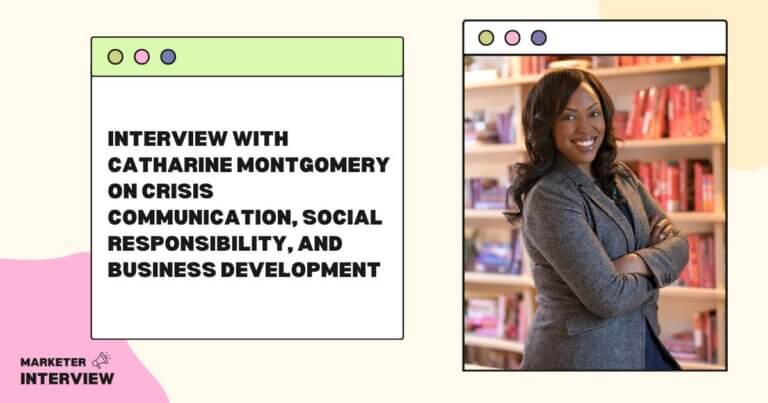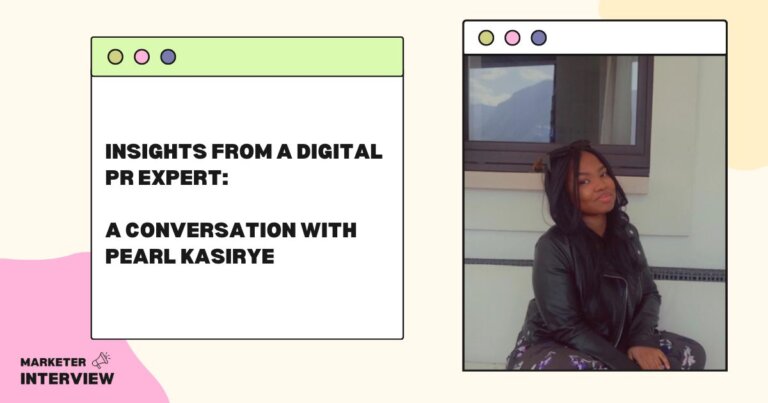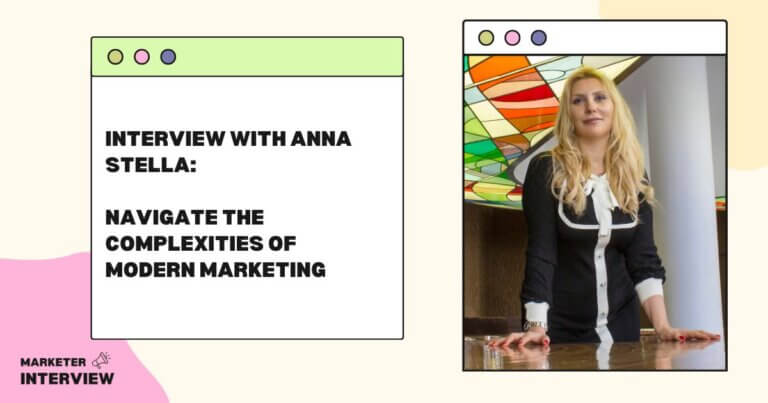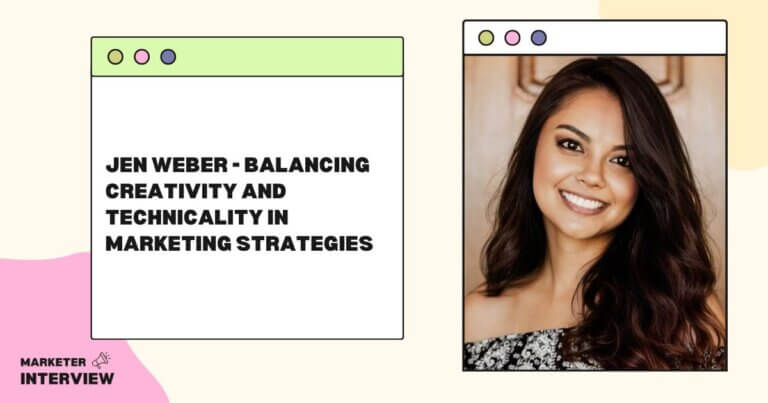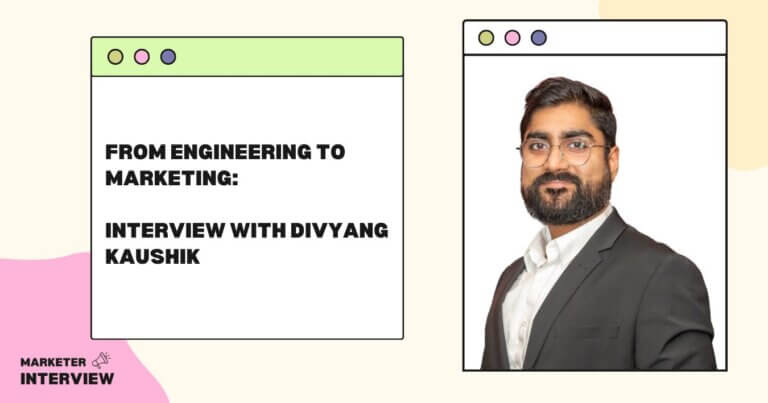Interview with V. Michael Santoro: Insights on Online Personal Branding
Welcome to Marketer Interview, where we bring insights from some of the industry’s most successful and inspiring marketers.
Today, we have the pleasure of speaking with V. Michael Santoro, Founder of Brand Velocity, an expert in online personal branding, SEO, content, and copywriting.
With years of experience in the field, he has successfully transitioned his SEO company into a SaaS company and was awarded a US patent in 2017, which he later sold in 2021.
We are excited to delve deeper into his journey and learn more about his expertise and strategies for building a successful personal brand, creating compelling copy, and staying up to date with the latest SEO and content marketing trends.
Let’s jump right in!
Contents
- 1 Can you tell us about your marketing journey?
- 2 What inspired you to specialize in online personal branding, SEO, content, and copywriting?
- 3 Could you share a recent project you’ve worked on that you’re particularly proud of and why?
- 4 What are the most critical factors for building a solid personal brand online?
- 5 How do you stay current with the latest trends and changes in SEO and content marketing?
- 6 Can you share a tip to create a compelling copy that resonates with your target audience?
- 7 How important do you think data and analytics are in informing marketing decisions?
- 8 How did you transition your SEO company into a SaaS company?
- 9 Could you walk us through the process of obtaining a US patent?
- 10 What are some of the critical tools and software that you use for your job?
Can you tell us about your marketing journey?
I worked in the high-tech industry and have experience in product marketing. I’m also certified in training in the development and built user training and product sales programs.
I began working online part-time in 2004 while still employed in high tech. I had just completed an SEO course. At first, it was more about exploring a new hobby and challenge to see if I could build a website and get it ranked in the search engines.
There was a PDF manual, and the course creator said to print and read it before beginning. So I clicked print and went to make a cup of coffee.
I had an older Apple laser printer, and the 650-page manual took several hours to print. In addition, web tools were primitive by today’s standards, and building websites required developing much more technical expertise.
A colleague I worked with had created a child safety product and needed help to sell it through traditional channels. While discussing it, I indicated that I had taken an online course and that I could help him sell his product online.
We agreed that I’d sell the product online at retail and pay them the wholesale price and shipping via PayPal. Upon payment, they would ship directly to the customer. I did not have to worry about inventory or customer support, only marketing and processing my orders.
I then built a child safety website and also included Amazon products through my affiliate links for other related products. I was curious to know if I could get the website pages to rank or even make any sales. So, I optimized the site and began ranking on Google page one for all the major keyword phrases.
I earned enough from that site to pay for my daughter’s college education at a major university. I accomplished it through SEO. I never spent any money on advertising.
I also used SEO to market the first book I co-authored with my teenage daughter at the time. It helped improve father-daughter relationships.
In addition to book sales, we were contacted by media producers and reporters for interviews, including the Wall Street Journals’ Lifestyle reporter. They found us when conducting Google searches.
We were also featured in well over a dozen newspapers for their Father’s Day edition and had guest appearances on both radio and TV shows.
As word spread locally about my SEO accomplishments, many small businesses contacted me to ask if I could help them.
I then started an SEO company with a partner. We co-authored “Niche Dominance, creating order out of your digital marketing chaos.”
We used the book as a business card and began signing up clients. We hired and trained our SEO technical staff. The book helped us to generate almost $500K in SEO revenue.
An interesting twist was when a top local PR firm asked if we wanted to barter services. They offered to promote our book in exchange for helping them with their SEO. In addition, they asked us to provide a short article on a topic. So we wrote one about the importance of online reputation in the digital age and how to protect it.
The PR firm distributed it as a press release. As a result, over 50 publications, including WSJ MarketWatch and Yahoo Finance, picked up the article. This helped us to gain instant authority and credibility.
We had provided SEO services to local businesses for several years. As such, I kept up with the continuous Google algorithm updates and modified our SEO services to continue achieving results for our clients.
What inspired you to specialize in online personal branding, SEO, content, and copywriting?
The way Google has evolved, building a solid personal brand online is the first step required to compete and succeed.
I’ve accomplished this for both my name and my previous SaaS company. It helped to sell the technology. I wanted to demystify personal branding and want entrepreneurs to achieve the same success affordably.
A solid online personal brand is essential for entrepreneurs to achieve success. For their content to rank, they must build authority and trust with Google. This also increases conversions with potential customers.
The primary way to accomplish this is by publishing expert-level helpful content and achieving topical authority in their niche. Creating content on occasion based on individual keywords has become less effective.

To achieve topical authority and build a solid personal brand, you must produce content for as many keyword phrases and questions associated with the niche. Google wants brands to go deep on a specific topic instead of wide with general content.
An SEO content marketing strategy plays the long game and produces the best conversions. Although digital advertising generates quick traffic, it’s expensive, and when the advertising stops, so does the traffic. However, there is little long-term gain.
Additionally, customers are savvier today. They research potential businesses and hire those they feel they can trust. A strong Google and social media presence communicates that trust.
With the significant Google updates, ranking and obtaining consistent targeted traffic has become very challenging. As a result, it’s become difficult to market online while trying to build their businesses effectively.
Additionally, many do not have the money to hire a professional SEO or marketing company.
Since building a personal brand online is now essential, I created the Brand Velocity program as a solution. It uses the techniques that worked for me.
I decided to test it first with a couple of my solopreneur clients. The goal was to have them control Google Page 1 with multiple listings for their brand. This is the first step required for online success.
I was proud of the consistent results they achieved. One client called me excited about owning Google Page 1 for his brand and stated, “This stuff works!” Thank you. He followed the program and achieved it independently using free tools and recommended resources.
I had beta-tested my Brand Velocity Program.
What are the most critical factors for building a solid personal brand online?
The critical factors concern Google’s requirements and potential customer expectations. They are aligned.
This requires building authority and trust by providing expert-level informational helpful content to your niche audience.
Google wants an E-E-A-T approach: Experience – Expertise – Authority – Trust. It’s essential to associate your personal brand with this criteria. Google wants content depth and not width using generic content.
When you begin, you can rank for branded keyword phrases, e.g., Brand name + keyword phrase. Eventually, when Google trusts your personal brand, you can start ranking for the unbranded keyword phrases.

Potential customers conduct brand research before they decide on the company they wish to hire. A solid personal brand communicates that you are an authority and leader in your niche. This can provide a competitive advantage.
If you own Google and YouTube for your brand and provide expert-level content for free, your brand trust is immense. However, imagine your competitors only have a static website and a few social media profiles. Who would you hire?
If you authentically help people first, the money will follow. This is the essence of building a strong personal brand online.
How do you stay current with the latest trends and changes in SEO and content marketing?
This is a continuous challenge. I participate in Facebook Groups and subscribe to SEO experts’ YouTube channels and email lists.
Also, many software companies provide excellent SEO training on manually conducting SEO practices. Their mission is to simplify the process with their products.
It is helpful to learn how to do things manually to know how to do things correctly. Missing a step can impact rankings. It also cuts the learning curve.
People base their content on individual niche keyword phrases. Then they write and post an article on their blog.
This is no longer effective. Instead, it’s best to research what Google already ranks for the keyword phrases and produce better content.
Incorporating the associated topically relevant keyword phrases into the content is also essential. It’s the way Google gauges the quality and depth of your content.
Here are two free tools to quickly obtain this information:
Detailed SEO Chrome or Firefox extension: Enter your keyword phrase and use Detailed to see the type of article Google ranks, e.g., Blog post, Listicle, etc.
Then visit the top three ranking sites and record the tags, word count, sub-titles, number of images used, etc. This is your article outline.
Topical Relevance Keywords: Next, go to https://www.topicalrelevance.com/.
Enter your keyword phrase and obtain the topically relevant keywords for your article.
This is a challenge to write. Start with long-tail keyword phrases with less SEO competition to practice the mechanics of writing the articles correctly.
Bonus tip:
Use ChatGPT to organize and draft the core article. Then ensure you add your expertise to make the piece unique.
Here’s a sample prompt to get you started, followed by an example:
Create an SEO-optimized _____ word _______ article for the title “_________________.” Include an introduction, a key benefits list, a conclusion, key takeaways, and an FAQ with answers.
In the article, contextually include the following list of LSI topically relevant keywords according to SEO standards, “______, _________, ________, _______.”
Also, add the following subheadings and related content to the article, “__________? ____________, __________, ______________, _________.
Example:
Create an SEO-optimized 1500-word listicle article titled “The Dos and Don’ts of Personal Branding Online.” Include an introduction, a key benefits list, a conclusion, key takeaways, and an FAQ with answers.
In the article, contextually include the following list of LSI topically relevant keywords according to SEO standards, “personal brand, personal branding, social media, online presence, personal brand online, target audience, personal branding tips, personal branding examples, personal brands, personal branding services, social media platforms, personal brand examples, personal branding strategy, many people, search engines, blog posts, potential clients, search results, neil patel, social media profiles, personal online brand, real life, social media accounts, thought leader, online reputation, content creation, business cards, personal brand statement, personal branding online, strong brand.”
Also, add the following subheadings and related content to the article, “What is a personal brand?, Begin with your personal brand story, Pass the search engine test, Build and energize your tribe, Develop a content marketing strategy, Make valuable connections via outreach, Find an influential mentor, Have a PR strategy, and do the work.
Make sure you check for AI detection and plagiarism. I use these tools:
If necessary, rewrite as required to bulletproof the article: https://quillbot.com/
Once you’re comfortable, you can add to the prompt, informing it about other items you want to add: tone, writing style, etc.
How important do you think data and analytics are in informing marketing decisions?
With marketing, it’s all about the data. This includes obtaining real-world data for:
- Creating your customer avatar
- Brand messaging, content, and email marketing feedback
- Website analytics to improve conversions
How did you transition your SEO company into a SaaS company?
As an SEO company, we began using personalized videos to reach potential customers. We recorded their website and Google Page 1 results and provided a free report.
We sent them directly to YouTube or embedded the video on our website. It was cumbersome and a lot of work.
There were few video tools available at the time for sales outreach. However, because of the positive response and increased leads, we decided to design and build a SaaS platform to automate the process.
We used the SEO-generated revenue to fund development. The challenges included the first developer not to build a scalable system and the user interface looking like a Windows 95 application. We learned a lot from that experience.
We then hired a new developer who did an excellent job on the back end. However, he wasn’t a user interface developer. Finally, we hired a front-end developer, who delivered a bug-infested user interface which we eventually scrapped. Another painful lesson learned.
We then got it right, attracted Angel investors, and eventually sold the technology. Although the tech development was challenging, we did build a good online brand which helped with the sale.
Could you walk us through the process of obtaining a US patent?
Filing for a patent is a complex process and is expensive. Therefore, it’s essential to determine if it’s worth it for your business before starting the process.
Being awarded a patent is a significant achievement that shows your company has developed an innovative solution. However, the process is costly and time-consuming.
Once you’ve received a patent, you’ll also need to pay to renew it if you want to keep it. Before you start the process, you need to ask yourself if the patent will influence potential investors and increase your company’s value.
Remember, the patent is only good in your country. Anyone outside your country is not infringing on your patent if they build a similar product but do not sell the product in your country. Applying for a patent in other countries is also costly and requires hiring local patent attorneys.
You need to hire an experienced patent attorney. It’s a complicated process, and the application is a nightmare.
The first step is to have the attorney check your idea against prior art to see if there is any conflict. Next, the attorney will check if your idea conforms to a Supreme Court patent ruling. An invention must be “new, useful, and non-obvious.”
It’s essential to ensure that your patent idea conforms to these requirements before starting the application process. This will give you the best chance of success and save time and money on an application that may not meet the criteria.
Our cost for this initial process was $1,500, and took several weeks to complete. Prior art can be decades old and associated with a completely different technology. For example, our cloud-based SaaS video technology was compared to patents about closed-circuit television technology from the 1990s.
Once the attorney felt we could proceed, we filed for a provisional patent. He not only spent hours on the phone interviewing us about our idea and how it worked, but we also had to write a detailed spec describing our technology and how it worked.
The attorney took the information and wrote the patent application in the expected legal language.
Two things that astonished me:
1. The patent office does not recognize software as patentable. Instead, they want to know how the computer hardware processes the software as inputs and outputs.
2. They don’t allow screenshots of the software. We had to hire a drafter to make technical drawings. This was an additional $1,500.
Next, if we didn’t want to wait three years or longer, we could apply for an early review. That was an additional $1,500.
All it means is if you get approved, you get put on a pile that can take up to 18 months instead of three years. Fortunately, we were approved.
During the review process, we were questioned a couple of times about salient points. It’s customary but adds months to the process.
We finally received the patent for real-time video calls to action in 2017. Here’s a link for reference.
Here are some final points to consider before deciding to file for a patent:
- A patent pending status can benefit marketing, as it communicates that your solution is unique and different from your competitors, provided it offers value to your customers. However, it needs to do more than just attract attention.
- A patent does not sell itself. The patent office has thousands of patents that have yet to help those who hold the patent. If your patent provides value beyond a unique idea, you must also market it and obtain media coverage.
- A patent does not guarantee that you can attract investors or buyers for your company or patent. They will still want to see traction.
- With the extensive time involved, you are only protected in the country where you filed your patent. If you sell online, companies in other countries can copy your offer and build it themselves. It’s hard to track their activity even in your own country.
- If a company provides something similar that predates your patent application start date, they may not be violating your patent. However, if this is the case, it may be considered prior art and could affect your invention’s patentability. That’s why thorough research is necessary before you file for a patent.
- The ongoing costs of maintaining the patent can add up over time.
- Even after your patent is granted, others can still challenge it in court. The USPTO has a process for challenging a patent, which involves filing a petition with the PTAB within a specific period. Defending a patent can be costly and time-consuming, with expenses well into the six figures. The fee to challenge is high enough to ward off small companies. However, it’s pocket change to Google or Facebook. They know most startups can’t afford the legal challenge.
Without revenue and business growth to support the patent, it usually won’t help a business to grow or sell.
However, the rub is you can’t file for a patent if you’re already selling the product. So our patent was only a value add, not the primary reason for selling the technology.
If you want a patent reference for your resume and are willing to pay for it, then proceed. The chances of obtaining a patent are slim but possible.
Instead, invest in building your brand and list. Then turn your list into an attentive audience. That approach can lead to more steady sales and a more successful business.
What are some of the critical tools and software that you use for your job?
For my website:
I use the Thrive Themes WordPress plugin. It’s a theme builder and suite of marketing tools.
I used it to create my Brand Velocity Program and build my content hub. (coming soon)
I also use the Rankmath SEO plugin to optimize my site.
I use Thrivecart as a shopping cart and for affiliate management.
I use Longtail Pro for keyword research
For content creation, I use ChatGPT and the other tools mentioned above.

